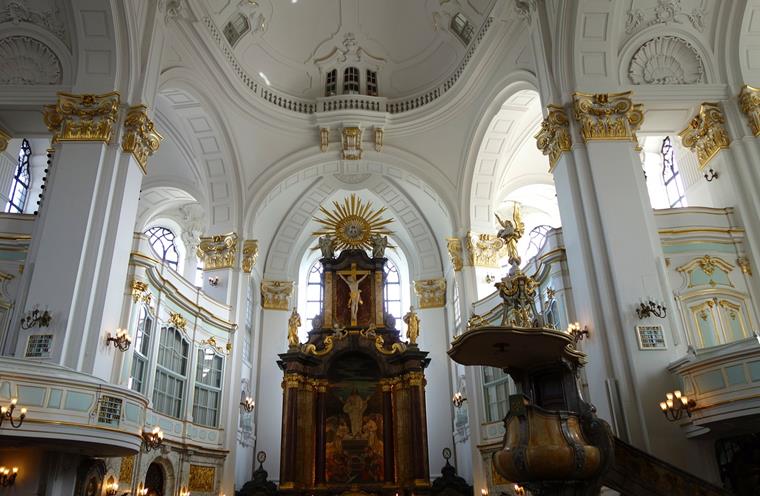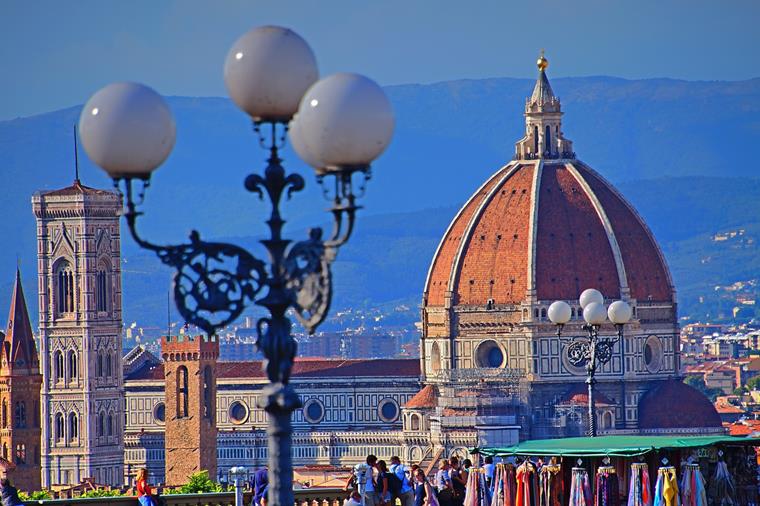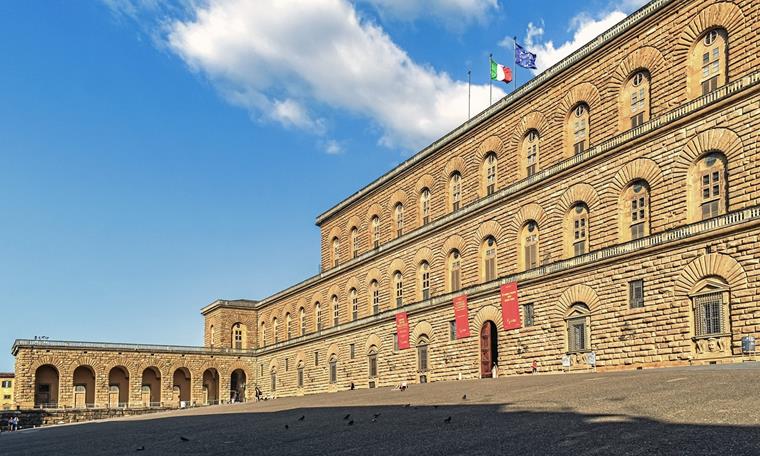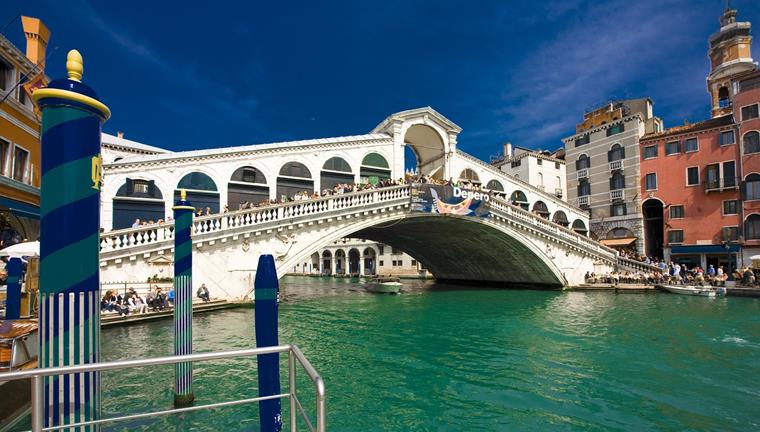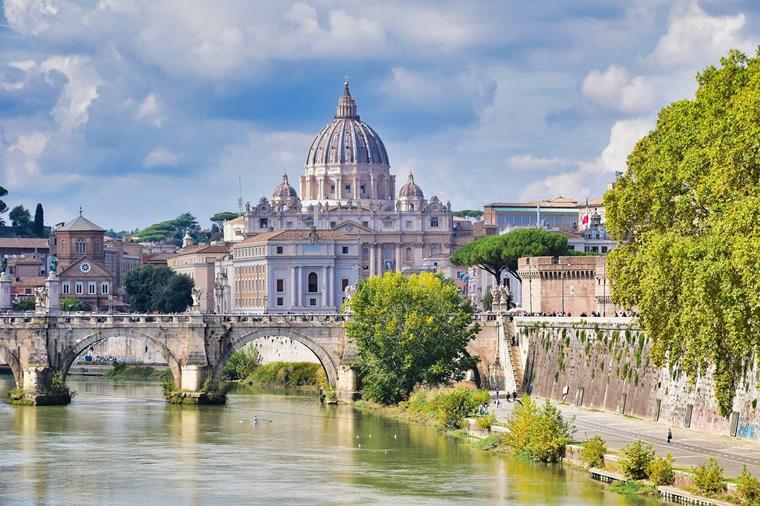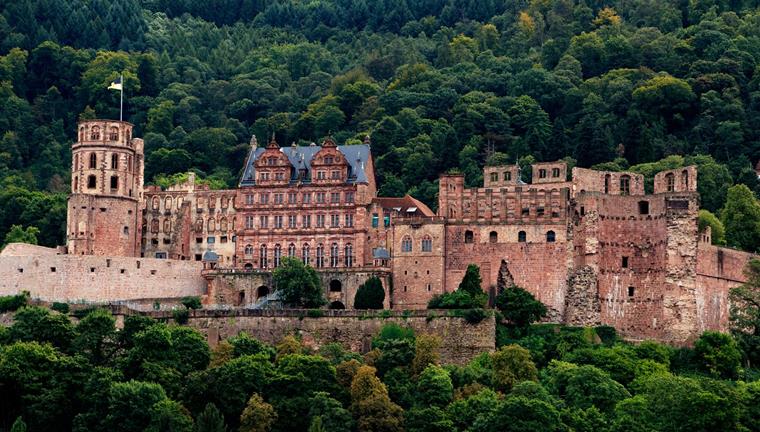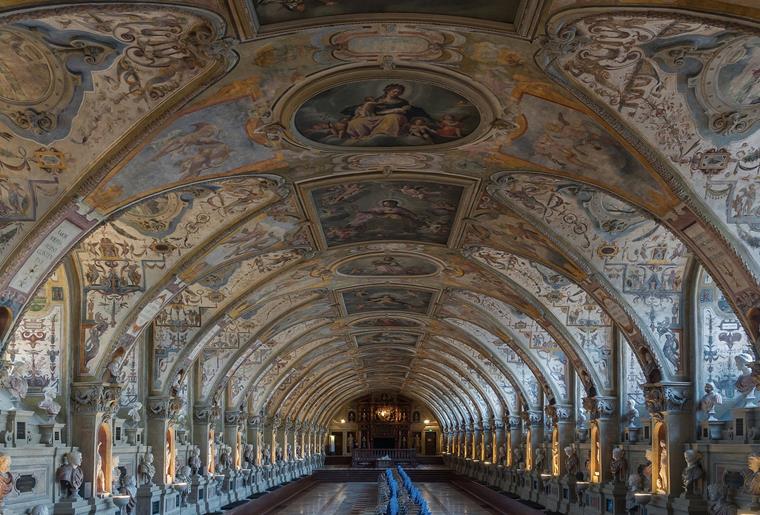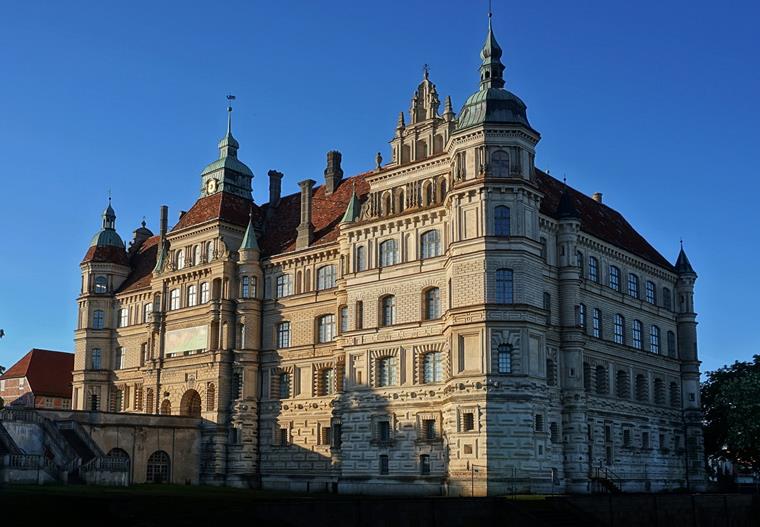The native country of the Renaissance was Italy. From there, this cultural, intellectual, and artistic movement spread throughout Europe. The time period differs from region to region, but is roughly applied to the 14th to the 17th century.
Today, we take a closer look at some of the typical buildings, and show you what makes them so special for that time, and still today. Then, we summarize what engineers, as well as the entire construction industry, can learn from the Renaissance buildings. Are you excited? Then read on!
What is Renaissance?
Unlike the Gothic, for example, that concentrated on new and as magnificent as possible building methods, the Renaissance builders recalled the old standards. Especially the shapes and structures of ancient times, such as Roman and Greek buildings, were a source of inspiration. Time-honored masterpieces like the Pantheon were meticulously studied and architects tried to reinterpret and improve them using innovative methods.
The architecture of the buildings is easy to distinguish from the previous eras: If it looks highly symmetrical and orderly, it is usually a Renaissance building. As mathematical principles, such as symmetry, were incredibly important here. The builders also took over this from the ancient buildings.
Technical progress is also more than clear in the structures of Renaissance masterpieces. The idea of ancient domes, arches, and columns has been further developed and expanded. This is how, for example, the dome of the Florence Cathedral was created, designed by Filippo Brunelleschi: a true masterpiece of engineering.
Like the Gothic architecture that preceded it, the buildings from the Renaissance period were usually abound with decorations and numerous details. The sculptures in particular showed the technical ability of the builders.
In the Renaissance architecture, nothing was built without a reason. Every sculpture or line, no matter how small, had a symbolic meaning and often a political background. Each building represented the power and influence of its respective rulers and institutions: You are where you live.
The hallmark of the Renaissance cannot only be found in the construction of the individual buildings. It brought the order to often rather random urban planning of the Middle Ages. For example, Florence was replanned by Filippo Brunelleschi and Leon Battista Alberti –geometrically and more rationally to better organize the city.
In the Renaissance, ancient architecture merged with innovation: a really exciting thing. Let's take a closer look at the typical structures. Our journey, like that of the Renaissance itself, begins in beautiful Italy.
Renaissance in Italy
The Renaissance era had its origin in Italy and spread throughout Europe. Whether art, architecture, or culture: It had a far-reaching influence on the people and their way of life. Let's start with Florence, a city that was influenced by this cultural movement like no other.
Santa Maria del Fiore
Florence
The construction of the Cathedral of Santa Maria del Fiore, also known as the Florence Cathedral, began as early as at the end of the 13th century, based on the design by Arnolfo di Cambio. He was a very famous architect and sculptor who dedicated himself entirely to the Gothic style. The construction began on the west facade and the bell tower, but was interrupted repeatedly due to the death of the respective architects.
In the middle of the 14th century, the original Gothic style became increasingly unattractive, which is why the builders decided to hide the exterior of the cathedral, actually Gothic, under red marble from Siena, white marble from Carrara, and green marble from Prato. Finally, the dome was completed by the work of Lorenzo Ghiberti, a goldworker, and Filippo Brunelleschi, a craftsman. Their goal was to create a landmark of the city to compete with Venice and Pisa.
Due to the Brunelleschi's innovative ideas, the Florence Cathedral became the largest of its time, with the capacity for up to 30,000 people. His design of the dome was finally implemented in 1421 and completed 15 years later. With a diameter of 45 m (148 ft) and a height of 100 m (328 ft), it was the largest dome in the world and is considered one of the most impressive engineering works of the Renaissance.
In order to ensure stability and achieve such impressive dimensions, Brunelleschi used, among other things, a double dome shell and a special ring chain to transfer the loads appropriately.
Pitti Palace
Florence
Staying in Florence, we turn to Palazzo Pitti: a tall palace building with an impressive facade, and an extensive garden. It was built in the second half of the 15th century, presumably also designed by Filippo Brunelleschi. Particularly interesting here is the integration of an aqueduct that brought water inside the palace and was used to supply the vast gardens.
In 1550, the building came into the hands of the Medici ruling family, and it became their official residence. Around 1560, and again at the beginning of the 17th century, extensive extensions and reconstructions were carried out, so a large part of the present building was created.
The interior decoration also dates to the 17th century. Only two lateral round towers were built in the first half of the 19th century. Today, there are numerous museums in the palace.
Rialto Bridge
Venice
Visitors to Venice cannot avoid the charm of the city's numerous canals and bridges. The largest of them, the Rialto Bridge (Ponte di Rialto), connects the districts (Sestieri) of San Marco and San Marcos directly across the famous Canal Grande. With a span length of 48 m (157.4 ft), the bridge is really impressive and is built on foundations consisting of 12,000 oak piles.
However, it was not the first bridge at this location. In 1246, a timber bridge was built there and renewed several times due to the rapid decay and fires, typical for the Middle Ages. It became a problem when the bridge collapsed under the weight of crowds in 1444, so it was decided to build a bridge made of stone in 1507.
Financing and construction of the structure was a major issue and was discussed for several decades. In the end, the design by the relatively unknown unknown architect Antoni da Ponte prevailed. The single-span bridge improved the traffic flow on the busy Grand Canal.
After three years of construction, the Rialto Bridge was completed in 1591 and opened to traffic. This was during the rule of Duge Pasquale Cicogna, recognizable by the inscriptions and emblems on the bridge typical for the Renaissance. It was the first bridge over the Grand Canal and is still a popular place for tourist.
St. Peter's Basilica
Rome
One of the most famous landmarks of Rome is St. Peter's Basilica. It is not only one of the largest church buildings in the world: In particular, the huge dome, designed by Michelangelo and completed by Giacomo della Porta, is considered a unique technical masterpiece.
Constantine I, the first Roman ruler that made Christianity the state religion, had the first St. Peter's Basilica built over the tomb of St. Peter. Between 318 and 322 AC, the construction began, and was completed in less than 40 years. 1,200 years later, the era of the temple ended, and Pope Julius II had let it demolished to commission the construction of the new St. Peter’s Basilica shortly afterwards, in 1506 AC.
The construction took about 120 years, and the architects, such as Donato Bramante, as well as the Italian masters Michelangelo, Raffaelo, and the famous sculptor Gian Lorenzo Bernini, have contributed to this total artwork. As an inspiration for the design, Bramante was inspired by the Roman Pantheon, while Michelangelo was designing the famous dome of the basilica.
Directly below St. Peter's Basilica is the Vatican Necropolis. At a depth of up to 12 m (40 ft), this vast burial chamber shelters important personalities from bygone days, such as the remains of 91 popes.
The incredible dimensions of 5.5 acres of St. Peter's Basilica are a symbol of the Christianity proud. With the height of 136 m (449.2 ft), it has the tallest dome in the world. In 1984, St. Peter's Basilica was included in the list of UNESCO World Heritage Sites.
Renaissance in Germany
Most of the interesting and well-known masterpieces of the Renaissance art are located in Italy. However, Germany also has to offer some buildings from that time that still exist today. In contrast to southern Europe, the buildings here were much simpler and were not necessarily inspired by ancient buildings. Above all, duchesses, castles, and town houses were built. Let's take a closer look at some of them.
Heidelberg Castle
Heidelberg
Nowhere in Germany can you observe the architectural development over the course of centuries better than at the example of the Heidelberg Castle. Already in the 13th century, the construction began on a hill directly above the old town. Over the centuries, it has been expanded and rebuilt again and again. The headquarters of Heidelberg University were also located here, founded in the 14th century.
Due to the numerous renovations , visitors can find different architectural styles here. Gothic, Renaissance, and Baroque elements come together. The best-known is probably the "Large Barrel" or the "Heidelberg Vineyard Barrel". As the name suggests, this is a huge wine barrel built in the 18th century: it is a touristic highlight and a symbol of the importance of the region's wine production industry.
Noticeable are also the clear signs of destruction, which have left part of the castle as a ruin. During the Thirty Years' War and the Palatinate War of Succession at the end of the 17th century, many areas were destroyed and later partially restored and rebuilt.
Today, the castle is not only a tourist destination, but primarily a stage for various cultural events and a seat of an interesting museum.
Munich Residence
Munich
The huge residence originated as a water castle built in 1385. Several dukes, electors, and finally kings of Bavaria expanded the castle bit by bit into an extensive complex.
The elector Maximilian I commissioned the construction of the west facade between 1611 and 1616. A speciality is that the architectural structure is only painted, but is also marked by some sculptures, such as the famous "Patrona Boiariae" (1614), the Holy Mother Mary with the Christ Child. There is also the strong symbolism of the Renaissance here. Maximilian I began to place Bavaria under the protection of the Patroness Maria and was a driving force behind the gory wars of religion.
The residence of the Duke Maximilian I had four wings and it is still a symbol of the castle architecture of the 17th century. However, considering the architectural style of the Renaissance itself, the Antiquarium is the most interesting part of the complex. It is the largest Renaissance hall north of the Alps.
Today, the residence is primarily used as a public museum and event venue. Visitors can find here a variety of ancient furniture, paintings, sculptures, bronzes, clocks, and tapestries.
Güstrow Castle
Güstrow
When it comes to Renaissance in Germany, Güstrow Castle should not be missing. It is one of the most important Renaissance castles in the Northern Europe. Here, Italian and French architecture is combined with the typical North European fundamental structure. Like many buildings of that time, Güstrow Castle has an eventful past.
The original mediaeval ducal castle was destroyed by fire, and a sumptuous residence was built there shortly afterwards, in 1558, by Ulrich III, Duke of Mecklenburg. The architect Francesco Parr from Italy built the west and south wings entirely in the style of the Italian Renaissance.
A few years later, in 1586, the castle wing on the north side fell victim to the fire, and this time, it was a Dutchman, Philipp Brandin, who took care of the extension of the north and east wing until its completion in 1598. Thus, the influence of the Dutch Renaissance on the castle complex began as well.
After the ducale house of Güstrow died out in 1695, the castle remained largely unused. It was used as a country workhouse, and eventually converted into a residential home for elderly people and many parts of the interior design were lost. In 1963, extensive renovations began, restoring the former mix of the Renaissance styles to the castle's interior and exterior.
Today, the exhibition inside the castle invites guests from near and far to delve into the life of the old aristocratic Güstrow dynasty. The extensive gardens also invite to leisurely walks.
Conclusion Renaissance
The Renaissance is undoubtedly an era when innovation in architecture and engineering was highly valued. With the knowledge of ancient construction, new techniques and methods arose in Italy to create amazing works that could even surpass their predecessors.
But also in neighboring countries, unique interpretations of this cultural current were formed. As a result, a variety of similar, but different architectural styles of the Renaissance arose in Europe.
What can we learn from the Renaissance?
As from every era, we can take something for us from the Renaissance to our modern construction. Nowadays, many different areas of the construction industry usually work on a structure – but more alongside each other than at each other.
It was different at the time of the Renaissance. Artists, scientists, and engineers developed new ideas together to find innovative solutions to complex problems. Different areas worked hand in hand to create great structures together. A little more interdisciplinary cooperation would also be good for the construction industry today.
Humanism played a major role especially in the Renaissance. Here, the importance of people and their individual abilities flowed into the social culture. This was also retrieved in the construction industry.
In the design of buildings, the old builders paid attention not only to the technical aspects of their work, but also to the fact that they serve society. They should not be just a landmark and historical immortalization of their creators, but much more: Living space and public space where people also felt comfortable. Here, there should be a focus on the human being.
Our modern construction industry often relies too much on the cheap, quick assembly of buildings. The basic technical data must be right in order to comply with the regulations. But what about the people who use it later? Residents or visitors should be able to feel comfortable in it for decades, if possible. This requires more than just technical understanding.
Another way to move forward with a view to the Renaissance is to use the ancient knowledge. During that time, the knowledge of classical antiquity about the art of architecture was rediscovered in Italy. Master builders took this knowledge and developed it further to create new innovations.
This approach is also interesting for us in the modern construction industry. In addition to working according to current trends and proven methods, we should look back into the more distant past. Perhaps we can find the old builders' ideas to tackle modern problems and to integrate the concepts that were already proven in the past into new technologies.
Therefore, the Renaissance was a very important era of architecture that still has a great influence on the architecture of many big cities today. We can look up to these often stately buildings and take some of these impressive architectural style ideas into our construction methods today. Because they are always fascinating.
.png?mw=760&hash=02259481bfee4d69c3db089c4c7f10b5df059524)
